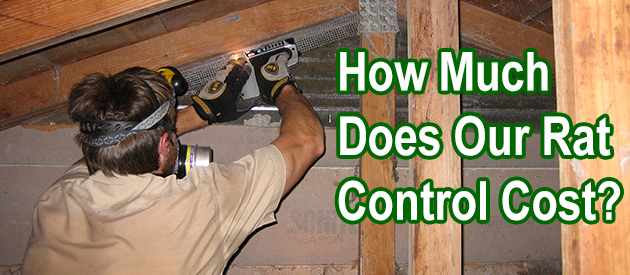Jackson County, Kansas City Rat Control Situation:
My mother has a medium size varment running around and we have put snap traps out only for it to get away with the peanut butter. waste of good peanut butter! The strange thing is it's eating the philadrium plant taking leaves off. not touching lucky bamboo in water ot the amarilys bad spelling. can you tell me why? Anyway, I've got a dozen traps baited with peanut butter on the obvious trails up there. My question is: should I put traps on top of the insulation (I've got loose blown insulation), on the joists (which aren't quite wide enough), move the insulation out of the way between the joists and put the trap on the ceiling drywall, or something else? I kind of did a mix for this first run, and I guess I'll figure it out eventually through trial and error, but I'd welcome any advice and any other tips would be greatly appericated. gail
I read the articles on your web site. Back in August, I had a new roof, soffit, eavesthrough done. Everything appears fine, the company did a great job, no complaints. About 2 weeks ago, we stated to hear scratching noises in the attic between 2 - 4 am. The noises are in the light to medium range, it does not seems to be a large animal such as a racoon. So, I have no idea what is up there, but I obviously have to deal with it. I walked around the house and up on the roof to see if I could find any entrances. I could not find any. Would you have any idea on what animal would be up there at this time of year. I live in Ontario Canada, about 30 miles west of Toronto. I'm going to start with setting mouse traps. Any advice/suggestions would be helpful.
Kansas City Rat Control Tip of The Week
Are Rats Nocturnal?
Biologically, rats are nocturnal. These animals come out at dusk to look for food and carry out other activities, then go back into hiding at dawn. Their choice of coming out at dusk is dependent on many things that have to do with their natural behavior and biology. Right here, we will be taking you through some of these factors.
The first factor is that rats are silent animals and will prefer to operate in an environment with less noise. Their involvement with humans and special liking for staying in places close to human settlements will make them want to stay in hiding during the day time because the activities of humans during the day causes noise that they can't cope with.
Another factor that modifies rats to being nocturnal is the fact that their instinct only makes it possible for them to feel relaxed and active when there is less danger. This is nearly impossible during the day time as many of their natural predators will be active during that exact time.
Third, rats like are sneaky and will always prefer to operate in hiding without the occupants of the house knowing. The night has limited light and the occupants are most likely to be at rest during this time. This gives rats all the time and opportunities they need to carry out their rat business without any form of interruption.
However, rats are also capable of moving around during the day if they have a safe route through which they can travel. The routes are usually dark and safe even during the day when there are noises and disturbances from humans.


